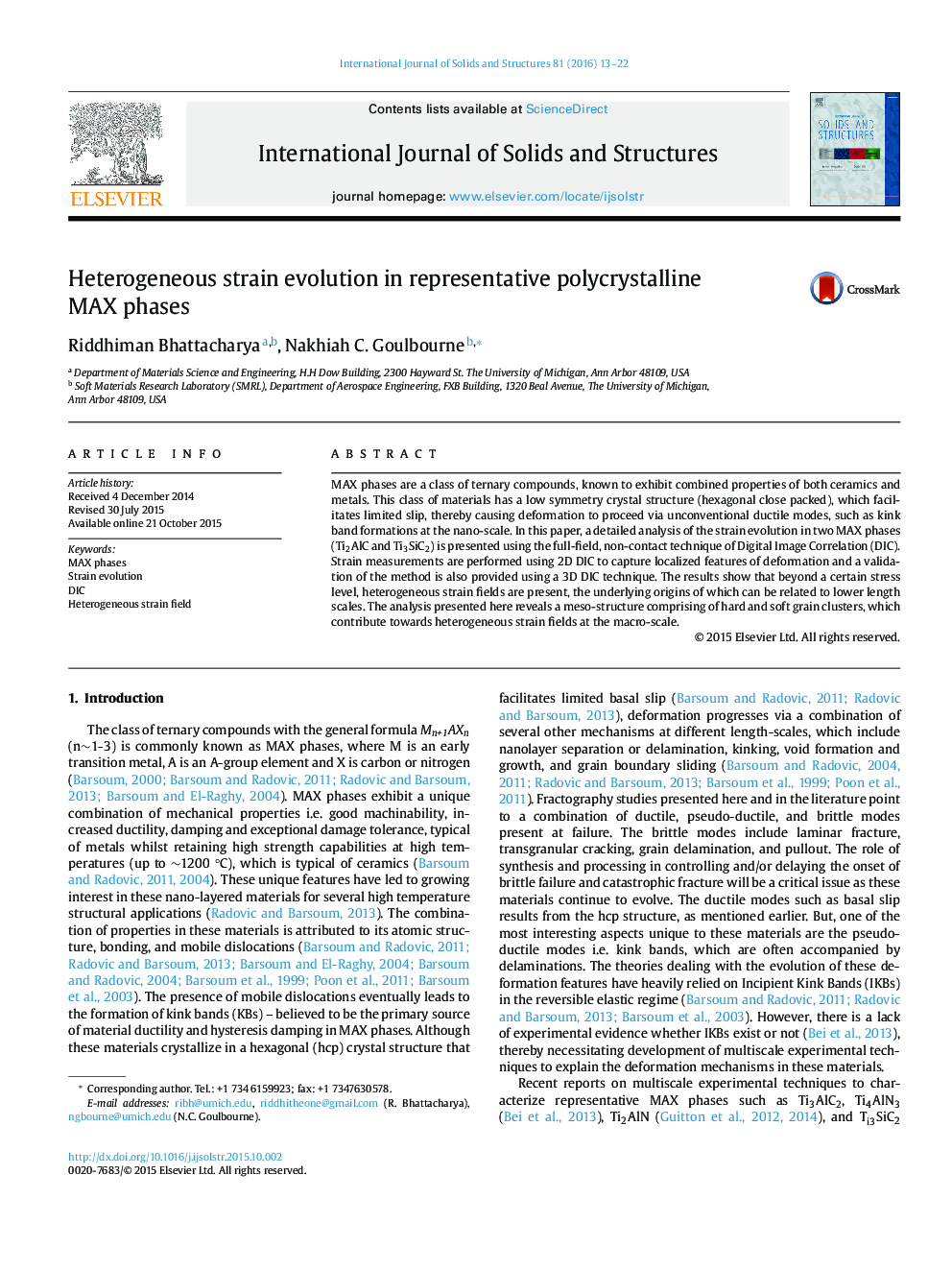| Article ID | Journal | Published Year | Pages | File Type |
|---|---|---|---|---|
| 277197 | International Journal of Solids and Structures | 2016 | 10 Pages |
•Strain fields in MAX phases are analyzed for the first time using DIC.•Field evolution characteristics show heterogeneous character, irrespective of strain-rate.•Strain heterogeneity is quantified using point-wise strain analysis.•Analysis of strain fields confirm the role of inherent meso-structure comprised of hard and soft grain clusters.
MAX phases are a class of ternary compounds, known to exhibit combined properties of both ceramics and metals. This class of materials has a low symmetry crystal structure (hexagonal close packed), which facilitates limited slip, thereby causing deformation to proceed via unconventional ductile modes, such as kink band formations at the nano-scale. In this paper, a detailed analysis of the strain evolution in two MAX phases (Ti2AlC and Ti3SiC2) is presented using the full-field, non-contact technique of Digital Image Correlation (DIC). Strain measurements are performed using 2D DIC to capture localized features of deformation and a validation of the method is also provided using a 3D DIC technique. The results show that beyond a certain stress level, heterogeneous strain fields are present, the underlying origins of which can be related to lower length scales. The analysis presented here reveals a meso-structure comprising of hard and soft grain clusters, which contribute towards heterogeneous strain fields at the macro-scale.
